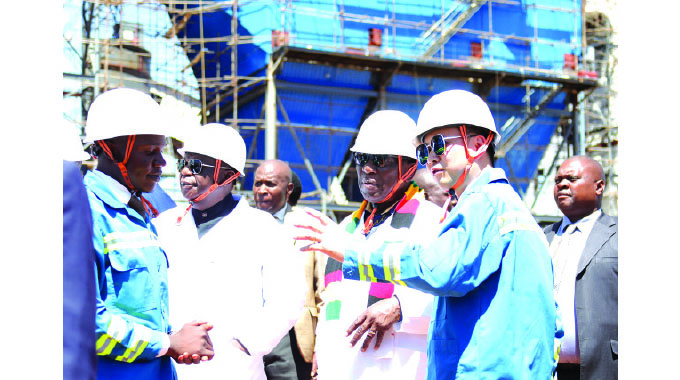Encomium: A tribute to water tests
Sharon Hofisi Legal Matters
Of what seriousness and significance were the water tests by Zimlab to us all? You see how characteristic, how representative it all is. Apparently we need to be told: “Think what you are thinking”.
The sanctity of human life is first considered as largely dependent on safe drinkable water. The Global Drinking Water Quality Index Development and Sensitivity Report (2007:3) states that “any number of water quality measurements can serve . . . as indicators of water quality”.
The World Health Organisation (WHO), states that 3,4 million people die every year as a result of water-related diseases. If we add 4 000 children dying each day as a result of drinking filthy water, according to the United Nations’ commissioned report and the figures sound appear like a devastating holocaust. These are hard facts behind dirty water crisis.
The recent condemnation of water sources around Harare’s suburbs calls for the lab’s voice to reach us all. It augurs well with a Lancet Report cited by Jessica Berman in 2009, which concluded that “poor sanitation and a lack of safe drinking water take a great human toll than war, terrorism and weapons of mass destruction combined”.
This is buttressed by the finding by the World Economic Forum (2015) that the water crisis is the number one global risk based on impact to society (as a measure of devastation).
The following also obtains around the world: “663 million people in the world — one in ten — do not have clean water (WHO/UNICEF 2015); globally, 19 percent of the urban population and 49 percent of the rural population lack an adequate toilet(ibid); and if everyone everywhere had clean water, the number of diarrhoeal deaths would be cut by 34 percent (Clasen et al 2014).
Zimbabwe is still writhing in agony because of the tragic effects of typhoid and Cholera. Water scarcity and contamination, unsustainable use of groundwater, ecological degradation, failure to provide basic water services and the climate change are some of the serious challenges that she currently faces as a nation.
For Harare, it started with the condemnation of 26 boreholes in eastern and western parts of the city in 2013.
A survey carried out around that time by Harare Water indicated that of 19 out of 114 boreholes in Tafara, Mabvuku, Caledonia, Hatcliffe, Budiriro, Glen View, Warren Park (including boreholes at the popular Mereki rendezvous), Dzivaresekwa, Highfield were contaminated with faecal matter.
The 19 boreholes were condemned because they did not comply with WHO Guidelines for coliforms and Ecoli, according to Engineer Christopher Zvobgo.
Enter 2017! Laboratory tests have now condemned water from at least 95 percent of the boreholes in low-density areas such as Borrowdale and Glen Lorne in Harare as unsafe for human consumption.
The condemned water is contaminated with coliforms and Escherichia coli (E. coli) bacteria. The E.coli bacterium is normally related with faecal matter. More grimly, the tests point to the existence of the same contaminating agents that were found in eastern and western suburbs in 2013.
The end result is there for us all to see: Urbanites around Harare are all threatened with blood diarrhoea, anaemia, dehydration, renal failure, and urinary problems, to employ Dr Chimedza’s concerns in the aftermaths of the recent tests results by Zimlabs.
Twenty out of 33 boreholes in Mbare are still condemned, representing about 61 percent of boreholes that are contaminated. Mbare or to be exact, the Mbare Musika Bus Terminus, remains a gateway into and out of Harare.
It raises fundamental issues relating to the difference between the right to health and the concrete question, “is borehole or well water always safe for drinking”.
This in turn is apparently important in answering two pertinent questions. Firstly, will a borehole or deep well provide the quantity of water needed for household consumption?
The answer is that water engineers usually carry out pumping tests as a practical way of obtaining an idea of the borehole’s efficiency and its optimal production yield. Suffice to say is that ground water levels and pumping rates measured during pumping tests provide some indication of the behaviour or state of ‘health’ of the groundwater system. The International Committee of the Red Cross “Practical Guidelines for Test Pumping in Water Wells”, 2011, provides useful insight in this regard.
Secondly, will the quality be such as to make the water clean, safe and potable? It is incumbent upon every citizen to be alert to the risks of contamination of their water.
Chemical precipitates, suspended particles and gas can be tested in this way.
WHO provides drinking water guidelines which divide water quality into health guidelines, which take into account chemical and radiological constituents that have the potential to directly adversely affect human health; and its acceptability guidelines which may not have direct health effects.
The answer depends derived from hydrogeology which in itself is not an exact science. To provide information on water quality, such as suitability for home use and stability in the long term are key issues to consider when establishing a water source. One can even draw saline or polluted water after long periods of pumping. Hydrogeologists or drilling contractors with knowledge on borehole drilling usually sink boreholes.
These may also provide advice on quantity of water that is likely to be produced after the drilling. Informed decisions are however needed pertaining to the final quality of the water produced by a borehole. Safe drinking water is essential to good health.
With the chief sources of contamination being micro-organisms and chemicals, it is important for citizens to acquaint themselves with WHO’s microbial guidelines on prevention of water contamination, and/or ingestion of water contaminated with animal or human faecal matter.
Micro-organism removal processes could include pre-treatment, and flocculation whereas inactivation processes can include primary or secondary disinfection. The risk of micro-organisms for instance, has been considered high in time of heavy rainfall when discharges from septic tanks usually flow into the water sources.
Some deep wells are not adequately protected and contaminated surface water easily gets into the supply. Some sources do not have settlement ponds or sand/gravel filters to remove organic material and small animals.
Chemicals may occur naturally in a catchment area. Sinking a borehole on a 1000 square metre stand may not be enough.
Some chemicals such as iron, manganese or colour from peat are not necessarily dangerous to health but they may affect the appearance, taste and smell of your water.
The obligation to test water when a either a new borehole is drilled or an old one is rehabilitated is effective when done collectively. Although individual tests can be carried out, the practice in other jurisdictions like England has been to carry out collective tests so that water supplies are treated in a way that suits a particular supply and the general type of contamination.
An integrated approach is also needed in areas such as waste management. This approach also allows for partnerships between authorities such as the Harare City Council and the residents on advice about treatment methods and protective mechanisms on water sources. The State should also ensure that urbanites have affordable public housing.
The establishment by Government of the Urban Development Corporation (UDCORP), particularly to spearhead urban development, was a commendable move. Land banks can now be audited under a State watchdog. Off-site infrastructure is being upgraded in a move that has the potential to curb poor sewage disposal.
We must all try to accept with some sort of commendation the government’s housing development efforts in emerging communities such as Hopely, Caledonia, Hatcliff, Whitecliff and Ushehwokunze. Housing at least been made more accessible and affordable for low income earners.
The minimum obligations on the rights to shelter for children are largely being met. The right to healthcare however demands that more should be done to speed up the servicing of stands in those areas. This will effectively reduce health problems associated with lack of proper ablution services.
Residents Trusts and Associations as well Rural District and Municipal Councils across Zimbabwe must ensure that citizens are involved in local governance issues, particularly those relating to good sanitation.
The need for good sanitation find expression in the words of United Nations Secretary General, Jan Eliasson, who in 2014 wisely remarked that, “2.5 billion people still lack ‘improved sanitation facilities’ defined as ones that ‘hygienically’ separate human excreta from human contact”.
Sharon Hofisi is a lawyer and is contactable at [email protected]





Comments